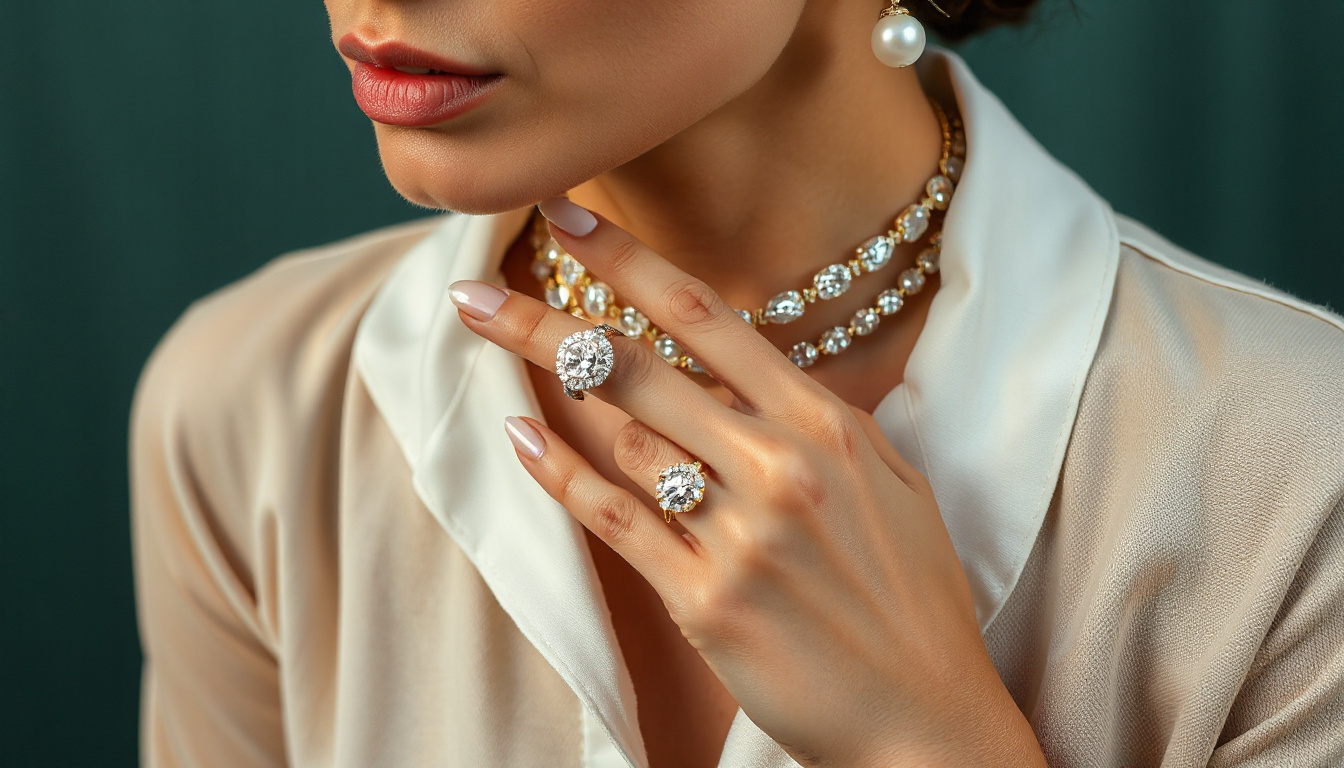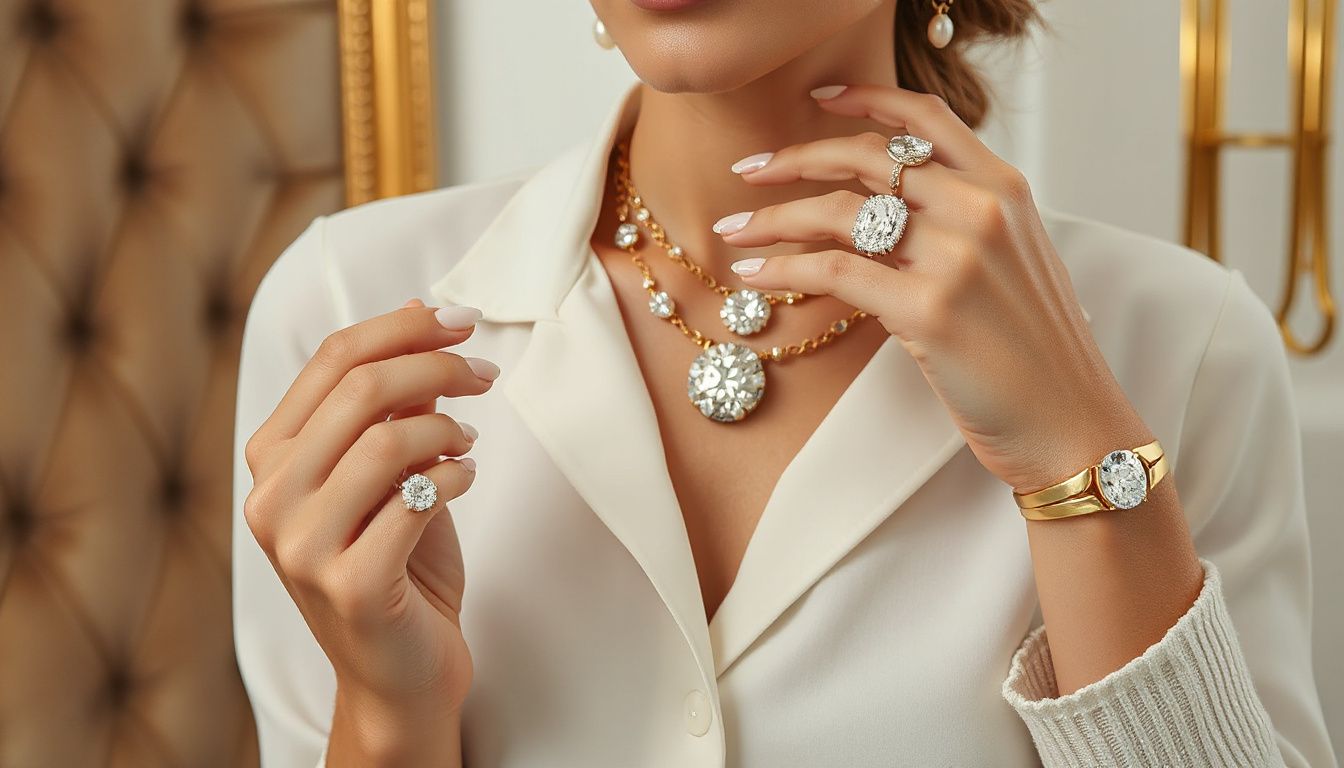Diamonds have captivated humanity for centuries, symbolizing love, status, and wealth. Among their many facets, the diamond cut plays a pivotal role in determining both beauty and value. In this article, we uncover the secrets of the most expensive diamond cuts, exploring what makes these precious gems truly priceless. From their stunning craftsmanship to unique characteristics, we will delve into the various factors that contribute to a diamond's price, the historical significance of certain cuts, and essential tips for investing in high-value diamonds.
Sign-up for the newsletter to receive 10% off your first full price order!

Key Takeaways
- Diamond cuts significantly affect a stone's brilliance and overall value.
- The rarity and quality of materials used are key factors in determining a diamond's price.
- Historical diamond cuts such as the Colombian and the Blue Moon have fetched astronomical prices.
- Investing in high-value diamonds requires knowledge of quality indicators and market trends.
- Understanding grading systems can help buyers make informed decisions about investing in diamonds.
Understanding Diamond Cuts: A Brief Overview
When it comes to the world of diamonds, the term 'cut' is not merely a description of shape, but a crucial aspect that influences a diamond’s overall appearance, brilliance, and value. The most expensive diamond cut is often considered to be the round brilliant cut, renowned for its ability to maximize light return through the diamond. This cut features 58 facets, meticulously arranged to enhance sparkle and fire, making it the number one choice among jewelers and buyers alike. Other high-end cuts, such as the princess, emerald, and oval cuts, also attract significant attention and can fetch impressive prices, but the round brilliant's classic allure and timeless appeal consistently place it at the forefront of luxury. Understanding these cuts involves recognizing how aspects such as symmetry, proportions, and polish can affect the final price tag, defining not just personal style, but also investment value.
Factors That Determine a Diamond's Price
When discussing the most expensive diamond cut, several critical factors influence a diamond's price. Firstly, the diamond’s carat weight plays a significant role; larger diamonds are rarer and thus command higher prices. Secondly, the cut quality is paramount; a well-cut diamond reflects light beautifully and enhances its brilliance, making it more desirable and costly. Thirdly, the clarity refers to the presence of internal or external imperfections—higher clarity generally leads to a steeper price tag. Lastly, the color grade is also vital; colorless diamonds tend to be more prized than those with noticeable tint. Together, these factors create a complex matrix that ultimately determines the price of a diamond, with each cut exhibiting its own unique charm and appeal, particularly in the high-end market where the most expensive diamond cuts are found.
'Diamonds are the hardest material on earth. They can cut through almost anything. But the real beauty of a diamond comes not from its ability to cut, but from its ability to shine.' - Unknown
Sign-up for the newsletter to receive 10% off your first full price order!

The Most Expensive Diamond Cuts in History
When it comes to luxury and extravagance, few items can match the allure of the most expensive diamond cuts in history. These stunning gems are not merely defined by their size; rather, their value is multifaceted, encompassing their carat weight, clarity, color, and most importantly, the precision of their cut. Among the most famous is the Hope Diamond, renowned not only for its deep blue hue but also for its storied past and exceptional cushion cut, making it one of the most costly diamonds ever traded. Another example is the Pink Star Diamond, a fancy vivid pink stone that sold for a staggering $7
1.2 million at auction in
2017. Its brilliant cut enhances its captivating color, contributing to its record-setting price tag. Additionally, the Wittelsbach-Graff Diamond, a rare blue diamond, exemplifies both beauty and history, having once been part of European royal collections and fetching over $24 million in 2010 due to its impressive cushion cut. Each of these diamonds exemplifies how the most expensive diamond cuts are intricately linked to both artistry and historical significance, reshaping our understanding of value and rarity in the gem world.
Investing in High-Value Diamonds: What You Should Know
Investing in high-value diamonds can be a lucrative venture, especially when considering the rarity and appeal of specific diamond cuts. Among these, the most expensive diamond cut often refers to the Asscher cut, known for its distinctive shape and brilliance. This cut features a square shape with beveled corners and a deep pavilion, which enhances the stone's overall sparkle. When investing, it's crucial to understand the factors that influence the value of a diamond cut, such as rarity, craftsmanship, and market demand. The Asscher cut, while beautiful, is not as commonly produced as other cuts like the round brilliant or princess cut, which contributes to its high market value. Additionally, the clarity and color of the diamond also play significant roles in its overall worth. Therefore, whether you're looking to invest for aesthetic pleasure or financial gain, understanding these elements related to the most expensive diamond cut can help you make informed and savvy investments.
Madano is a fine jewelry brand specializing in natural and lab-grown diamond engagement rings, custom designs, and timeless essentials. Explore our collections and behind-the-scenes on Instagram @madano_nyc.
Unveiling the Secrets of the Most Expensive Diamond Cuts: What Makes Them Priceless?
Diamonds have captivated humanity for centuries, symbolizing love, status, and wealth. Among their many facets, the diamond cut plays a pivotal role in determining both beauty and value. In this article, we uncover the secrets of the most expensive diamond cuts, exploring what makes these precious gems truly priceless. From their stunning craftsmanship to unique characteristics, we will delve into the various factors that contribute to a diamond's price, the historical significance of certain cuts, and essential tips for investing in high-value diamonds.
Sign-up for the newsletter to receive 10% off your first full price order!Key Takeaways
Understanding Diamond Cuts: A Brief Overview
When it comes to the world of diamonds, the term 'cut' is not merely a description of shape, but a crucial aspect that influences a diamond’s overall appearance, brilliance, and value. The most expensive diamond cut is often considered to be the round brilliant cut, renowned for its ability to maximize light return through the diamond. This cut features 58 facets, meticulously arranged to enhance sparkle and fire, making it the number one choice among jewelers and buyers alike. Other high-end cuts, such as the princess, emerald, and oval cuts, also attract significant attention and can fetch impressive prices, but the round brilliant's classic allure and timeless appeal consistently place it at the forefront of luxury. Understanding these cuts involves recognizing how aspects such as symmetry, proportions, and polish can affect the final price tag, defining not just personal style, but also investment value.
Factors That Determine a Diamond's Price
When discussing the most expensive diamond cut, several critical factors influence a diamond's price. Firstly, the diamond’s carat weight plays a significant role; larger diamonds are rarer and thus command higher prices. Secondly, the cut quality is paramount; a well-cut diamond reflects light beautifully and enhances its brilliance, making it more desirable and costly. Thirdly, the clarity refers to the presence of internal or external imperfections—higher clarity generally leads to a steeper price tag. Lastly, the color grade is also vital; colorless diamonds tend to be more prized than those with noticeable tint. Together, these factors create a complex matrix that ultimately determines the price of a diamond, with each cut exhibiting its own unique charm and appeal, particularly in the high-end market where the most expensive diamond cuts are found.
Sign-up for the newsletter to receive 10% off your first full price order!The Most Expensive Diamond Cuts in History
When it comes to luxury and extravagance, few items can match the allure of the most expensive diamond cuts in history. These stunning gems are not merely defined by their size; rather, their value is multifaceted, encompassing their carat weight, clarity, color, and most importantly, the precision of their cut. Among the most famous is the Hope Diamond, renowned not only for its deep blue hue but also for its storied past and exceptional cushion cut, making it one of the most costly diamonds ever traded. Another example is the Pink Star Diamond, a fancy vivid pink stone that sold for a staggering $7
1.2 million at auction in
2017. Its brilliant cut enhances its captivating color, contributing to its record-setting price tag. Additionally, the Wittelsbach-Graff Diamond, a rare blue diamond, exemplifies both beauty and history, having once been part of European royal collections and fetching over $24 million in 2010 due to its impressive cushion cut. Each of these diamonds exemplifies how the most expensive diamond cuts are intricately linked to both artistry and historical significance, reshaping our understanding of value and rarity in the gem world.
Investing in High-Value Diamonds: What You Should Know
Investing in high-value diamonds can be a lucrative venture, especially when considering the rarity and appeal of specific diamond cuts. Among these, the most expensive diamond cut often refers to the Asscher cut, known for its distinctive shape and brilliance. This cut features a square shape with beveled corners and a deep pavilion, which enhances the stone's overall sparkle. When investing, it's crucial to understand the factors that influence the value of a diamond cut, such as rarity, craftsmanship, and market demand. The Asscher cut, while beautiful, is not as commonly produced as other cuts like the round brilliant or princess cut, which contributes to its high market value. Additionally, the clarity and color of the diamond also play significant roles in its overall worth. Therefore, whether you're looking to invest for aesthetic pleasure or financial gain, understanding these elements related to the most expensive diamond cut can help you make informed and savvy investments.
Madano is a fine jewelry brand specializing in natural and lab-grown diamond engagement rings, custom designs, and timeless essentials. Explore our collections and behind-the-scenes on Instagram @madano_nyc.